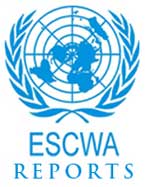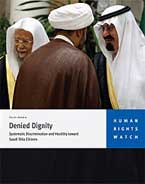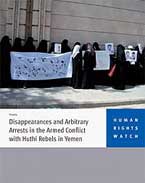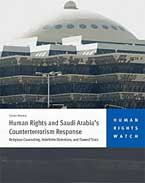S E C R E T SANAA 000221
NOFORN
SIPDIS
DEPT FOR NEA/ARP ANDREW MACDONALD, S/CT AMBASSADOR DANIEL
BENJAMIN, DS/ATA JOHN NASON, AND OBO ADAM NAMM
NSC FOR DPNSA BRENNAN
HQ USCENTCOM/CCCC-CIG FOR JSEATON
DHS/TSA FOR TOM WARRICK
E.O. 12958: DECL: 01/02/2020
TAGS: PTER PREL PGOV PINR PINS MOPS MASS MCAP ASEC
EAIR, ABLD, SA, UK, YM
SUBJECT: AMBASSADOR BENJAMIN DISCUSSES CT ASSISTANCE,
AIRPORT SECURITY WITH SALEH
Classified By: Ambassador Stephen A. Seche for reasons 1.4(b) and (d).
¶1. (S/NF) Summary. During a 35-minute meeting on January
31, the Department’s Coordinator for Counter-Terrorism,
Ambassador Daniel Benjamin, congratulated President Saleh on
the success of the London meeting and counter-terrorism (CT)
operations the ROYG has undertaken in recent weeks against
al-Qaeda in the Arabian Peninsula (AQAP) elements, and
described USG interest in increasing airport security and
sharing information on travelers in and out of Yemen. Saleh
agreed to the upcoming Transportation Security
Administration/Anti-Terrorism Assistance (TSA/ATA) visit,
requesting at the same time additional CT support. When
pressed by Ambassador Benjamin about Sa’ada, he indicated
that the ROYG had no intention of agreeing to a ceasefire at
this time. In a separate meeting, Foreign Minister Dr.
Abubakr al-Qirbi agreed on the success of the London meeting,
and suggested that the follow-up meeting in Riyadh would be
important for determining concrete steps. Senior ROYG
security officials expressed support for the Embassy’s
struggle to acquire land and a willingness to act on the
Embassy’s behalf. End Summary.
SALEH ON CT ASSISTANCE, AIRPORT SECURITY, AND SA’ADA
——————————————— ——-
¶2. (S/NF) In a January 31 meeting with President Saleh, the
Department’s Coordinator for Counter-Terrorism, Ambassador
Daniel Benjamin, congratulated Saleh on the success of the
London meeting and suggested that stability in Yemen can be
achieved only through a dual focus on security and
development. He commended Saleh on actions the ROYG has
taken in recent weeks against AQAP elements in Yemen and
assured Saleh that he could count on continued operational
support and intelligence sharing from the U.S. President
Saleh said he was satisfied with counter-terrorism (CT)
assistance to date and with Secretary Clinton’s speech at the
London Conference, but said he “would like to be more
satisfied in the future” and appealed for the acceleration of
additional support, specifically citing helicopters and
vehicles with IED-jamming devices. Describing Americans as
“hot-blooded and hasty when you need us,” but “cold-blooded
and British when we need you,” he asked for a “moderate blood
temperature” and measured approach. (Note: Also present were
Deputy Prime Minister for Defense and Security Rashad
al-Alimi, National Security Bureau Director Ali al-‘Anisi,
and Political Security Organization (PSO) Director Ghalib
Mutahir al-Gamish, with whom Benjamin met separately after
the conversation with the President. End Note.)
¶3. (S/NF) Ambassador Benjamin reiterated the USG desire to
ensure that no international terrorist attack originates
again from Yemen. He said the USG wants to help the ROYG
strengthen screening procedures at all of Yemen’s
international airports, and establish a mechanism for sharing
information on passengers traveling via air to and from Yemen
as well as foreign nationals who have come to Yemen to study
at language or religious institutions. When approached with
the upcoming Transportation Security
Administration/Anti-Terrorism Assistance (TSA/ATA) visit,
Saleh agreed to the idea but deferred to his Supreme Security
Committee (Alimi, et al) on the details. In the follow-on
meeting, Alimi and ‘Anisi both concurred with the upcoming
ATA/TSA visit and expressed support for increasing airport
security. ‘Anisi, however, had reservations about sharing
information on foreign students in Yemen, and complained that
the USG request was too broad. (Comment: According to GRPO
reporting, the ROYG is willing to share information with the
USG on American students in Yemen and would likewise share
information with other embassies about their nationals.
While Western governments would presumably share information
among themselves, this system would still leave intelligence
gaps about non-Western countries such as Nigeria. End
Comment.)
¶4. (S/NF) Citing Saudi Arabia’s decision to suspend its
military operations in Sa’ada and Abdul Malik al-Houthi’s
public acceptance of the ROYG’s conditions for a ceasefire,
Ambassador Benjamin asked Saleh if he saw an end to the
fighting. Saleh dismissed these points, arguing that the
Saudis gave a ceasefire ultimatum to the Houthis, and will
resume fighting in two weeks if the ceasefire is unfulfilled.
He called the Houthis “liars” and declared that they would
violate the six conditions of the ceasefire. He indicated
that the ROYG had no intention of agreeing to a ceasefire at
this time.
¶5. (S/NF) In a visit to Yemen Special Operation Forces
(YSOF) Headquarters, Ambassador Benjamin was treated to a
display of military equipment and briefed by YSOF Chief of
Staff Brigadier General Ahmad Dahan on YSOF activities.
Ambassador Benjamin emphasized common security interests and
congratulated Yemeni forces for their role in recent
operations. Dahan reiterated the request for helicopters and
asked for communications systems and additional training
courses. He lauded Yemeni operations as having a great effect
on AQAP elements, and indicated that the operations were
possible only due to the exchange of intelligence.
FM QIRBI LOOKING FORWARD TO RIYADH
———————————-
¶6. (S/NF) In a separate meeting, Foreign Minister Dr. Abu
Bakr al-Qirbi agreed the London Conference was a success and
expressed hope that the February follow-up meeting in Riyadh
would help determine concrete steps to move forward. Qirbi
agreed that a smaller group, focusing on Gulf Cooperation
Council (GCC) member countries, rather than a broader donor
group, would be more constructive. Qirbi said that the ROYG
wanted to focus on the Top Ten Economic Reform Priorities
over the course of the next year, but would need donor
assistance to accomplish these goals. He expressed support
for discussion at the GCC-hosted meeting of funding for an
extremist rehabilitation center, indicating that an
educational institute with a long-term plan would do much to
counter radicalization and address issues of poverty and
unemployment, particularly in areas where AQAP has a hold.
Qirbi and other ROYG officials expressed support for US
intervention with GCC member countries in an attempt to gain
financial support for a rehabilitation center as an
expression of regional support for Yemen’s stability.
EMBASSY LAND DISPUTE
——————-
¶7. (C) The Supreme Security Committee was familiar with the
Embassy’s struggle to acquire land, and said they were
willing to act on the Embassy’s behalf. Foreign Minister
Qirbi said that he had been in communication with Minister of
Religious Endowments Judge Hamoud Hitar, who indicated the
ROYG’s readiness for the purchase and resolution of a dispute
over ownership. Alimi said that Deputy Foreign Minister
Mohyadeen al-Dhabi was following up and had secured the full
cooperation of the Ministry of Religious Endowments. Alimi
encouraged Ambassador Seche to sign the contract for the
land, professing that he would personally guarantee the
investment. (Comment: In a follow-on conversation on
February 3, Alimi repeated his assurance to the Ambassador
that the ROYG is prepared to provide for the security of the
proposed housing site both during and after construction. He
suggested that the Ambassador meet with ‘Anisi, who President
Saleh has charged with overseeing the process, to discuss
final details of the deal, including our timeframe for
beginning construction. The Ambassador will try to see
‘Anisi next week for this purpose. End Comment.)
SECHE

















